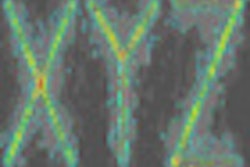
Speaking at the European Society for Therapeutic Radiology and Oncology (ESTRO) annual meeting held September 12-16 in Barcelona, Spain, WPE's chief medical physicist Jonathan Farr, PhD, shared some insights into the challenges posed by the proton therapy facility project. Farr explained that there were two essential -- and possibly contradictory -- objectives for the new facility, which is expected to start clinical operation in the second half of this year.
"We want to treat patients with the highest dose conformity possible while minimizing body dose," he explained. "Along with this quality requirement, as it is necessary to pay for the center, we also want a workflow efficiency similar to that seen in photon therapy."
Increased throughput
Farr first addressed the issue of efficiency. He pointed out that while commercial treatment planning software is available to rapidly create x-ray radiotherapy plans, today's proton therapy planning may still take many hours for certain clinical cases. Likewise, quality assurance procedures that can be performed in around 20 minutes for a photon-based setup can take several hours for proton therapy.
One way to help offset these time requirements, Farr explained, is to increase patient throughput by moving all pretreatment imaging and patient setup procedures outside the treatment room. To enable this, WPE is working together with firm Ion Beam Applications (IBA) of Louvain-la-Neuve, Belgium, and Oncolog Medical of Uppsala, Sweden, to implement Oncolog's Patlog patient loading and transport system.
The Patlog system loads the patient onto a tabletop, which is moved by a motorized trolley along a system of virtual rails. The patient remains on the same tabletop for all imaging procedures, as well as for the treatment itself. This system, which is compatible with all of WPE's MRI and CT systems, enables a high patient throughput.
"Efficient workflows for patient handling, setup, and treatment hold promise to meet high throughput demands," said Farr, noting that much work remains to be done in this area.
Top quality
The other fundamental criterion for the new proton therapy center is an ability to deliver the highest quality treatments. WPE plans to achieve this by implementing pencil-beam scanning. This relatively new technique involves actively scanning the proton beam throughout the target volume, irradiating a set of predefined spots and effectively painting the dose onto the target. It can also enable the delivery of intensity-modulated proton therapy.
WPE will have three gantry-based treatment rooms, two of which will contain dedicated pencil-beam scanning nozzles from IBA, the equipment provider for the new facility. The other will use the IBA Universal Nozzle, which includes four delivery techniques: pencil-beam scanning, single and double scattering, and uniform scanning. Operation of the Universal Nozzle allows the user to switch easily between these modes. The new facility will also include a fixed beamline room.
Initial tests on the pencil-beam systems revealed a proton beam spot size of just 3 mm sigma in air at the isocenter. "This has to be one of the smallest proton spots available commercially in the world, if not the smallest," commented Farr.
While pencil-beam scanning delivers the most conformal proton treatment, it also places increased demands on quality assurance procedures. Characterizing pencil-beam-based proton therapy systems necessitates the development of new methods and materials. As such, WPE's sensor and detector group is collaborating with IBA dosimetry to design and test detectors that can perform accurate range characterization of proton pencil beams.
The new detector comprises a stack of 180 ionization chambers of 120 mm in diameter. "The 180-layer multilayer ionization chamber is going through trials right now; initial results of using this for characterizing a proton beam are quite good," said Farr.
Planning for motion
Treatment planning tools for pencil-beam scanning proton therapy are also difficult to come by. Here, WPE is working with RaySearch Laboratories, a medical technology company in Stockholm, to develop a dedicated planning tool.
An essential prerequisite of such a tool is the ability to perform robust optimization. In other words, the treatment plan must be stable when perturbed by range or setup uncertainties and/or tumor motion. In combination with 4D pretreatment CT imaging, this feature should enable precision treatment of moving targets.
Other requirements for the treatment planning software include evaluation tools to simulate perturbations, deformable image registration, dose tracking, and 4D robust optimization including interplay effects. Except for the latter, all of these functions have now been developed.
The team tested the robustness tools by examining the effect of introducing a 5-mm setup perturbation and 2% density uncertainty to patient plans. With robust optimization, the plans remained stable; without, the plans fell apart. "The planning target volume of the robust plan stays approximately the same under stress," noted Farr.
Farr concluded that developments such as fast, high-definition pencil-beam scanning, advanced dosimetry, and treatment planning tools enable optimization of treatment quality. "It used to be thought that pencil-beam scanning could only be applied to static targets," he explained. "But in Essen, we want to treat all indications that come to us. And we have a way forward to achieve this goal."
By Tami Freeman
Medicalphysicsweb editor
October 11, 2010
Related Reading
IBA to build proton center in Poland, August 2, 2010
IBA wins Swedish contract, July 8, 2010
AHRQ analyzes particle beam radiation therapy, September 14, 2009
FDA clears proton positioning system, April 29, 2009
© IOP Publishing Limited. Republished with permission from medicalphysicsweb, a community Web site covering fundamental research and emerging technologies in medical imaging and radiation therapy.







_p888_f1_thumb.png?auto=format%2Ccompress&fit=crop&h=167&q=70&w=250)











